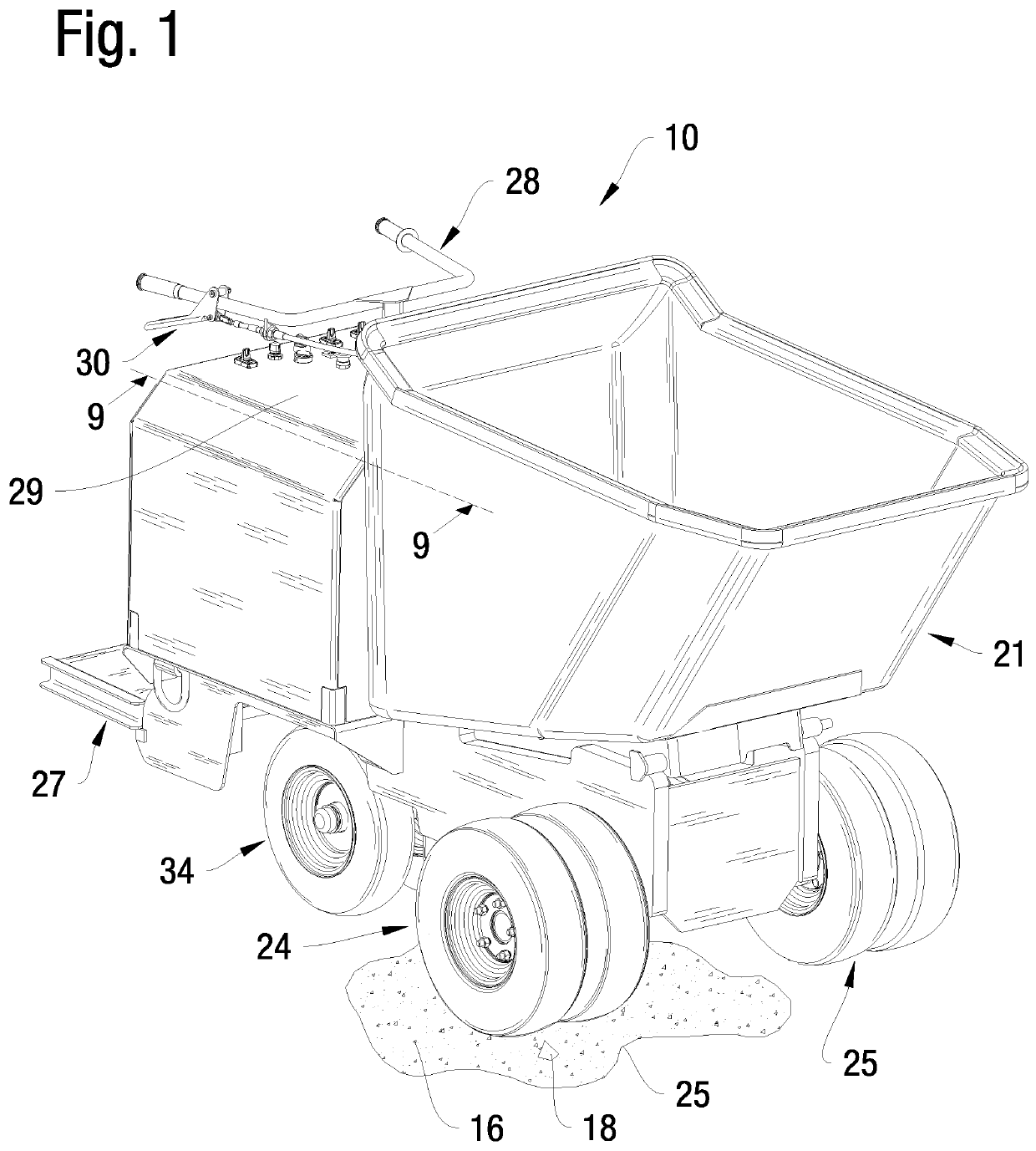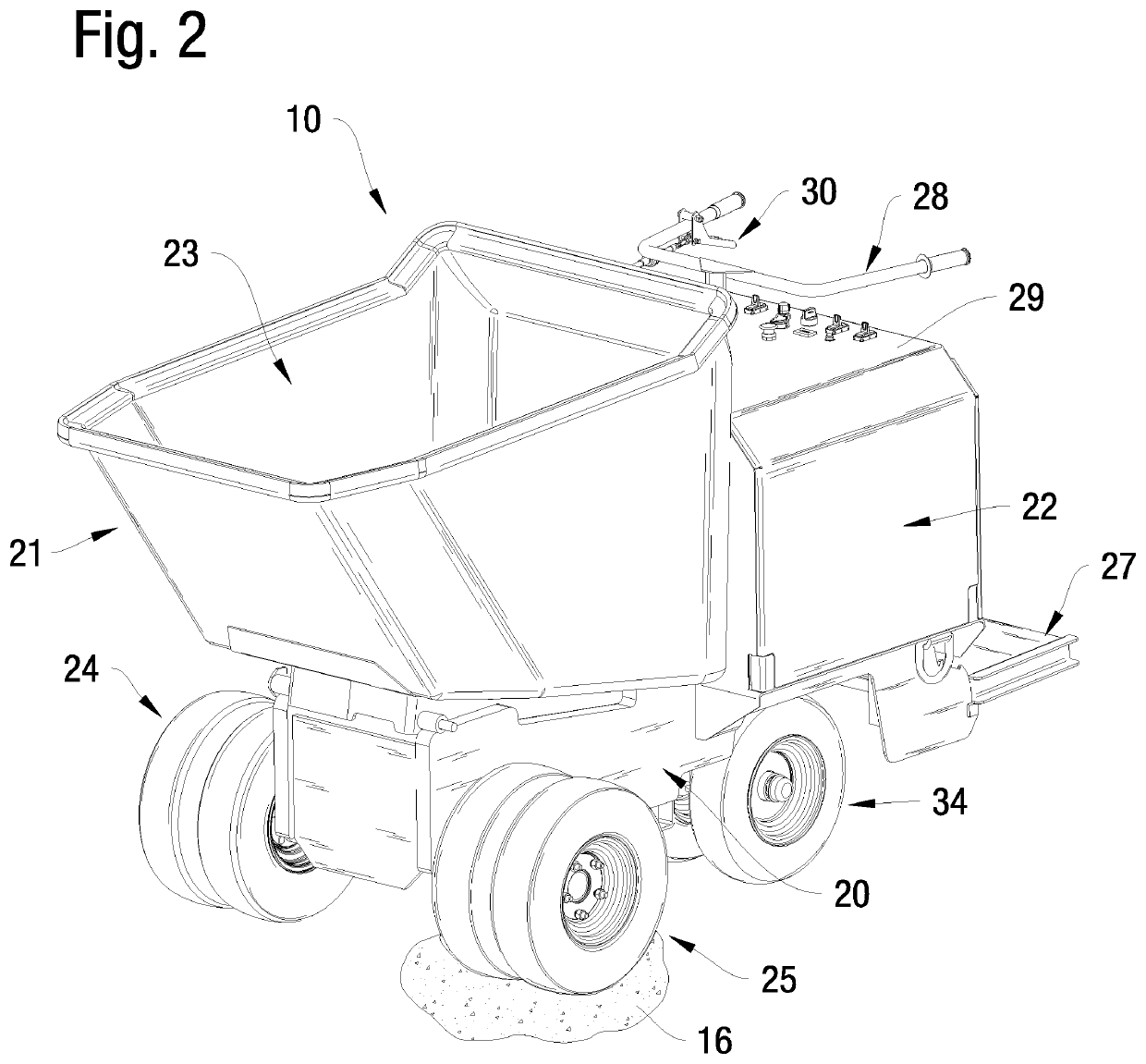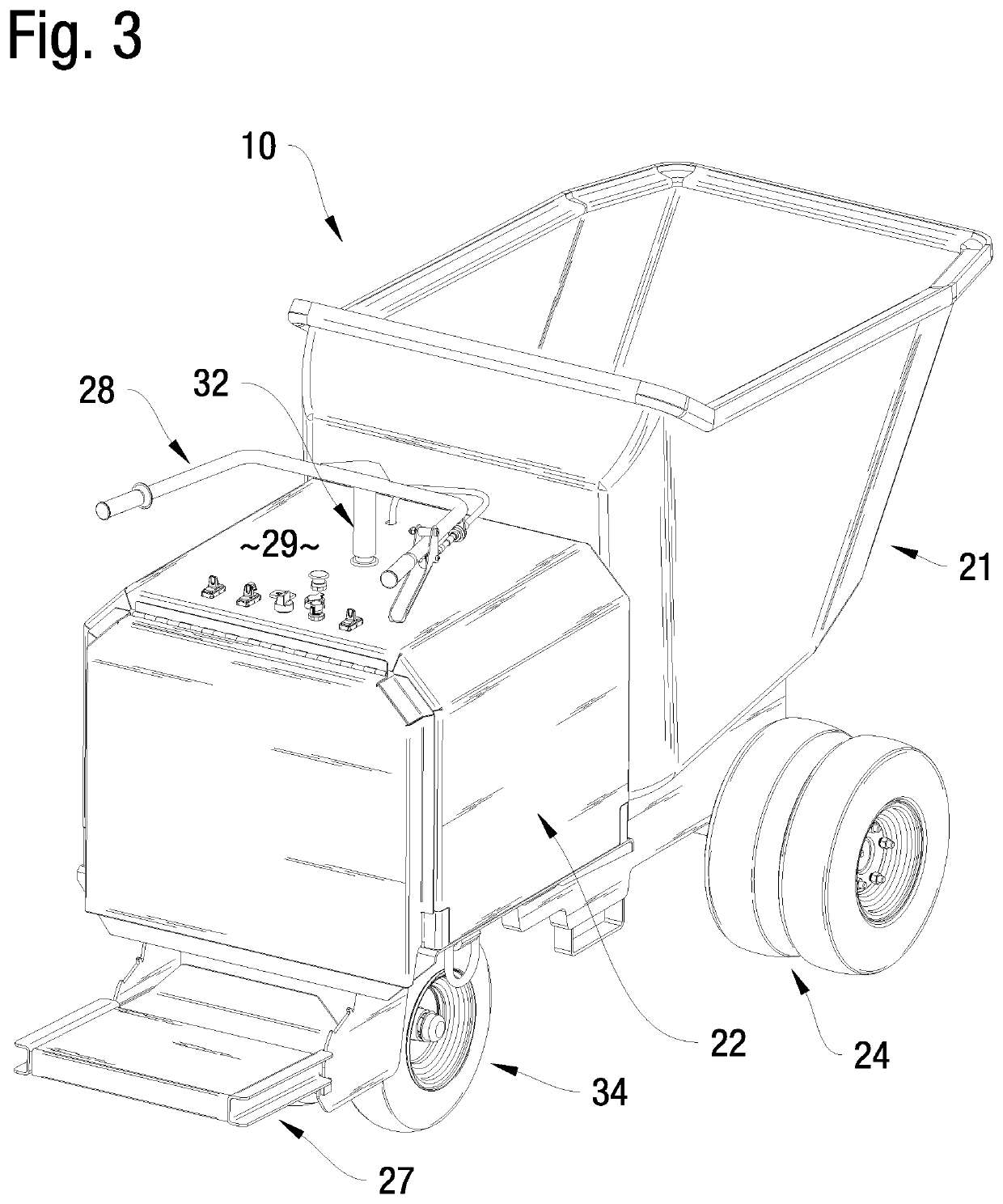Electric Concrete Transportation Cart
a technology of electric concrete and transportation carts, which is applied in the direction of transportation items, electric propulsion mounting, vehicle sub-unit features, etc., can solve the problems of uneven ground around most construction sites, aggravate the tendency to tip, and aggravate the propensity to tip, etc., to achieve the effect of safe maneuverability
- Summary
- Abstract
- Description
- Claims
- Application Information
AI Technical Summary
Benefits of technology
Problems solved by technology
Method used
Image
Examples
Embodiment Construction
[0049]With initial reference now directed to FIGS. 1-6 of the appended drawings, an electrically powered, self-propelled, cart or buggy constructed in accordance with the best mode of the invention has been generally designated by the reference numeral 10. (For purposes of the disclosure the terms “cart” and / or “buggy” are used interchangeably.) The cart 10 includes many chassis and frame similarities to prior U.S. Pat. No. 10,384,704 entitled “Steering Responsive Speed-controlled Buggy” issued Aug. 20, 2019 which, for purposes of disclosure, is incorporated by reference as if fully set forth herein.
[0050]Cart 10 is adapted to be deployed within a construction zone or work site for moving materials or supplies or tools to work site positions over an available pathway over ground 16. The cart 10 is especially adapted for hauling small batches (i.e., up to 2500 pounds) of green concrete to areas that cannot be safely or conveniently reached by much larger and heavier concrete mixing t...
PUM
 Login to View More
Login to View More Abstract
Description
Claims
Application Information
 Login to View More
Login to View More - R&D
- Intellectual Property
- Life Sciences
- Materials
- Tech Scout
- Unparalleled Data Quality
- Higher Quality Content
- 60% Fewer Hallucinations
Browse by: Latest US Patents, China's latest patents, Technical Efficacy Thesaurus, Application Domain, Technology Topic, Popular Technical Reports.
© 2025 PatSnap. All rights reserved.Legal|Privacy policy|Modern Slavery Act Transparency Statement|Sitemap|About US| Contact US: help@patsnap.com



